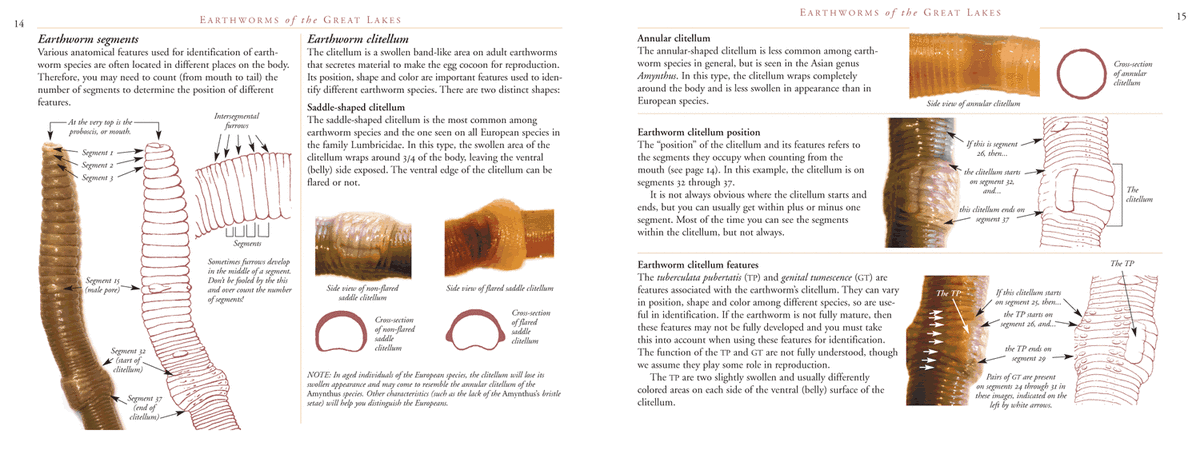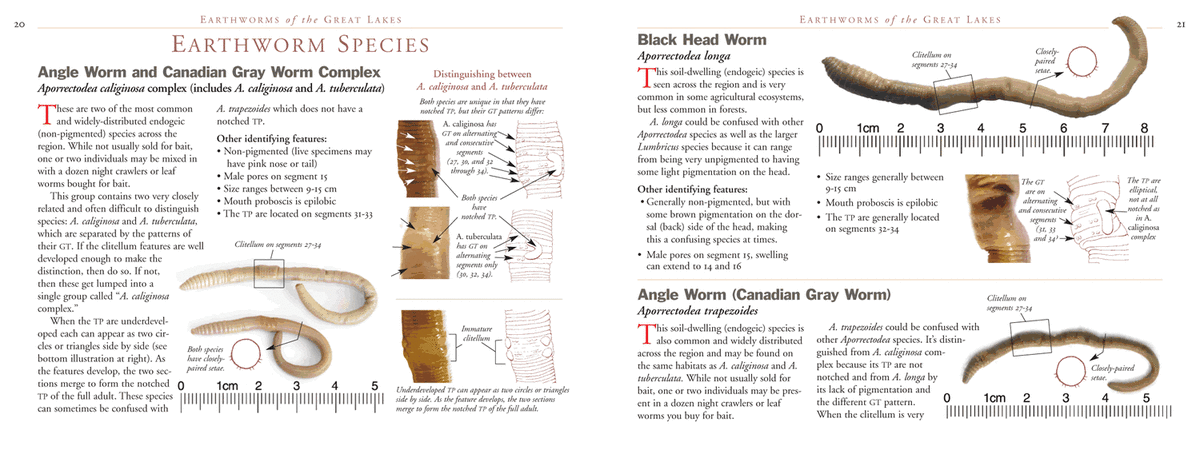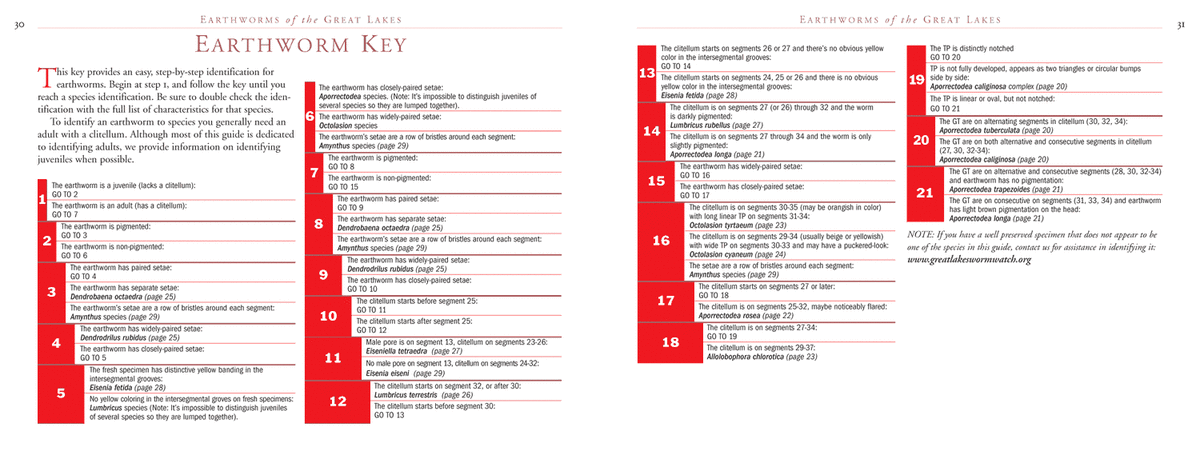Did you know there are no earthworms native to the Great Lakes? And did you know that they are destroying some of our forests? Earthworms of the Great Lakes will not only help you identify 16 species that are found in the ground beneath your feet, but also educate you as to their role in our forest ecosystems. This book makes an excellent classroom research tool. Methods for collecting worms and keys to identifying your finds are included.
Kollath-Stensaas Publishing
$13.95
47 pages
8”x6” horizontal
40 color photos
ISBN-13: 978-1936571055
ISBN-10: 1936571056
Order your copy of Earthworms of the Great Lakes
$13.95/copy
Educator discount: $10.00 each ($13.95 retail), Minimum of 10 books
Shipping and Handling:
| # Books | USA 1st Class | Canada Airmail |
|---|---|---|
| 1 | $1.00 | $1.25 |
| 2 | $1.75 | $2.00 |
| 3 | $2.50 | $3.25 |
| 4 | $3.00 | $3.25 |
| 5-10 | $4.05 | $6.00 |
| 11-20 | $6.00 | $9.00 |
| 21-30 | $9.00 | inquire |
| 31-50 | $12.00 | inquire |
| 50+ | inquire | inquire |
Inquire for shipping costs outside US or Canada.
Make your check or money order out to the University of Minnesota. Minnesota residents add 7.875% sales tax.
To order, mail the information above with your check or money order to:
Boulder Lake ELC
125 Bohannon Hall
1207 Ordean Court
Duluth, MN 55812 USA
Hello Professor Hale,
My name is Logan Peterman, and I am a Lab assistant in Don Waller's Lab at UW- Madison. Sarah Johnson (my supervisor) recently informed me that you are looking for feedback on your book Earthworms of the Great Lakes. Since I just used it extensively to classify Sarah's earthworm specimens, I think I can help.
First, you should know that I had no prior experience classifying or even critically observing earthworms before this experience. We initially tried to teach ourselves the process using coarse black and white photos and a midwest earthworm key that Sarah found somewhere online. That first attempt was a disaster. Imagine three people hunched around a table with a hand lens, a pile of preserved worms, and another pile of cryptic papers, trying desperately to figure out what the setae are supposed to look like (much less paired or single). After about an hour we cut our losses, dropped the worms back in their jar, and Sarah resolved to order a copy of your book.
Once it came, I reluctantly sat down with a dissecting scope and started in again. But here is where I owe you a huge thank you. I read through the entire book to begin with and immediately felt more comfortable with the subject. Your descriptions of the habits and habitats are helpful, but concise (we don't all need to be specialists right?). The background (especially on invasives) gave all of the specific information a solid context and really helped me learn the anatomy more quickly. Once I began keying out specimens, I found the color photos coupled with the diagrams to be an invaluable tool in picking out the specific features needed to make a positive identification. The key was clearly written and functionally it handled very smoothly. The photos became less necessary as I became more experienced with the common features, but every so often an ambiguous earthworm would appear and I'd glance back to those great photos and descriptions. I felt by the end o f the three weeks I spent classifying worms that you had single-handedly taught me a solid intro course in earthworm ID.
I do have a question that concerns the functional groups. There are some species (e.g., Lumbricus rubellus) that are labeled epi-endogeic. What exactly do you mean by that designation? Does it relate to different parts of their life cycle? Are they found in various depths but prefer one or another? Do they reside where many endogeic species live, but have dark pigmentation? Seasonal change? etc. I certainly understand that our groupings will always contain borderline examples, but I thought it might be helpful to include a note on what exactly this combination of functional distinctions indicates about the species.
Most of all, thank you for your great work. Your book made this process approachable and very interesting for me. If you have any specific questions about my experience with the book, feel free to ask.
Thanks again, Logan Peterman


